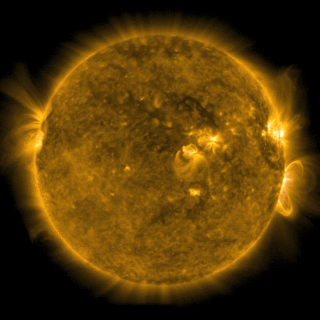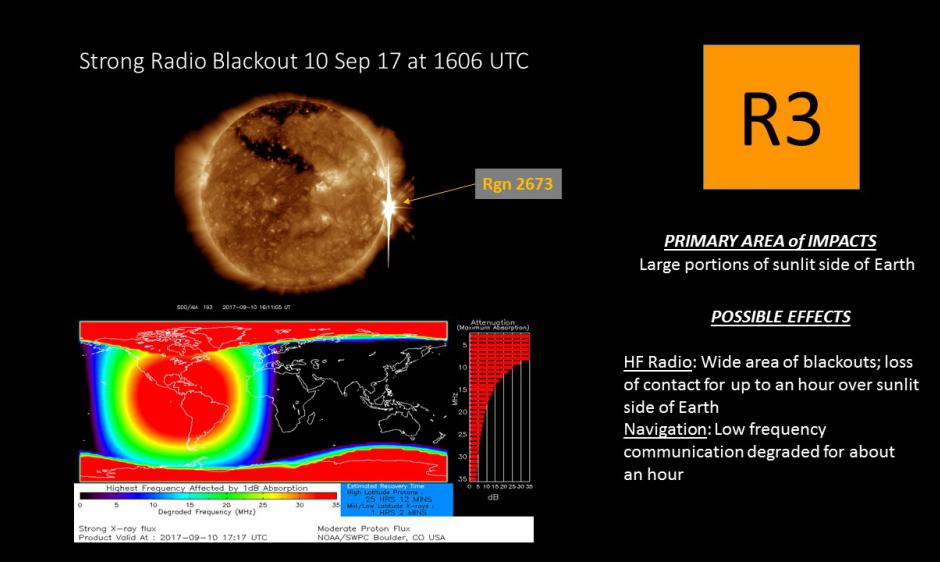Monster Solar Flare Marks 7th Powerful Sun Storm in 7 Days
The sun fired off yet another powerful solar flare yesterday (Sept. 10), its seventh in seven days.
The flare, which peaked at 12:06 EDT (1606 GMT), covered North and South America in high-energy light. The National Oceanic and Atmospheric Administration's Space Weather Prediction Center (SWPC) released a statement that warned of strong, high-frequency radio blackouts and navigation-system disruption, potentially lasting up to an hour.
Like the six other flares observed since Sept. 4, this one came from a sunspot known as Active Region (AR) 2673 , which is currently turning away from Earth and will soon be out of sight.

There are three categories of solar flares, and Sunday's was the highest classification: an "X" event. Two of the other recent flares were also X-class, including Wednesday's (Sept. 6) X9.3 flare, the strongest solar blast in 12 years.
The SWPC's warning also asked astronauts aboard the International Space Station to take special precautions, because they're above most of Earth's atmosphere and therefore are at risk of exposure to harmful radiation. The warning discouraged astronauts from performing spacewalks just after the flare, for example.
Like many powerful flares, Sunday's was accompanied by a coronal mass ejection (CME), a huge cloud of superheated solar plasma that races through space at millions of miles per hour. AR 2673 isn't pointing directly at Earth anymore, but this CME may still give the planet a glancing blow, potentially supercharging the northern lights on Wednesday night (Sept. 13), according to Spaceweather.com.
The solar activity seen this month comes as a bit of a surprise, as the sun is currently entering solar minimum, a quiet portion of the star's roughly 11-year cycle of change.
Get the Space.com Newsletter
Breaking space news, the latest updates on rocket launches, skywatching events and more!

Follow Doris Elin Salazar on Twitter @salazar_elin. Follow us @Spacedotcom, Facebook and Google+. Original article on Space.com.
Join our Space Forums to keep talking space on the latest missions, night sky and more! And if you have a news tip, correction or comment, let us know at: community@space.com.

Doris is a science journalist and Space.com contributor. She received a B.A. in Sociology and Communications at Fordham University in New York City. Her first work was published in collaboration with London Mining Network, where her love of science writing was born. Her passion for astronomy started as a kid when she helped her sister build a model solar system in the Bronx. She got her first shot at astronomy writing as a Space.com editorial intern and continues to write about all things cosmic for the website. Doris has also written about microscopic plant life for Scientific American’s website and about whale calls for their print magazine. She has also written about ancient humans for Inverse, with stories ranging from how to recreate Pompeii’s cuisine to how to map the Polynesian expansion through genomics. She currently shares her home with two rabbits. Follow her on twitter at @salazar_elin.
